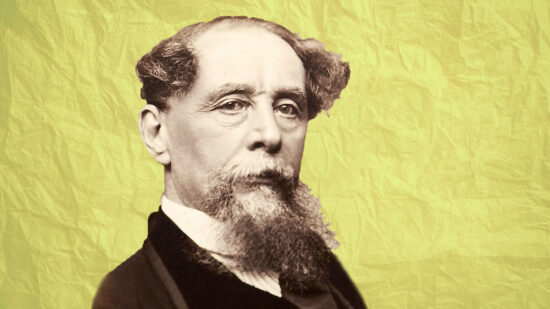Plot and Storyline
“Hard Times: For These Times” is a novel written by Charles Dickens and first published in 1854. The story is set in the fictional industrial town of Coketown and revolves around the lives of several characters who are deeply affected by the harsh realities of the Industrial Revolution. The main story arc follows the lives of Thomas Gradgrind, a wealthy and rigidly practical educator, and his children, Louisa and Tom.
Thomas Gradgrind firmly believes in the philosophy of utilitarianism, which emphasizes facts, statistics, and practicality over imagination and emotions. He raises his children, Louisa and Tom, in this strict manner, denying them access to any form of art, literature, or emotion. He educates them to value only hard facts and logic, disregarding the importance of human emotions and empathy.
As the story progresses, Louisa and Tom struggle with the consequences of their upbringing. Louisa marries Josiah Bounderby, an older industrialist, despite lacking genuine affection for him. Tom, on the other hand, falls into a life of crime and deceit, driven by his discontent and rebellion against his father’s rigid ideology.
The plot takes several twists and turns, involving various subplots and secondary characters. One significant subplot involves the circus entertainer Mr. Sleary and his troupe, who provide a stark contrast to the utilitarian worldview. Another important character is Stephen Blackpool, a hardworking factory worker who faces numerous hardships due to his impoverished and oppressed circumstances.
Without revealing major spoilers, the novel explores themes of social inequality, the dehumanizing effects of industrialization, the consequences of suppressing human emotions, and the struggle for individual freedom in a rigid society.
Characters
The characters in “Hard Times” are intricately woven and serve as vehicles for exploring the novel’s themes. Thomas Gradgrind, the patriarch of the Gradgrind family, represents the utilitarian philosophy of the time. He undergoes some character development, realizing the limitations of his worldview and the importance of emotional intelligence.
Louisa Gradgrind, Thomas’ daughter, embodies the stifled emotions and desires of individuals raised in a utilitarian society. Her character development centers around her awakening to the limitations of her upbringing and her search for personal fulfillment.
Tom Gradgrind, Louisa’s brother, symbolizes the rebellious spirit against the constraints imposed by society. His character showcases the consequences of unchecked desires and the destructive effects of a repressive environment.
Other notable characters include Josiah Bounderby, a wealthy industrialist and Louisa’s husband, who represents the hypocrisy and greed prevalent in society. Sissy Jupe, a circus performer, serves as a contrast to the utilitarian education system, representing the value of imagination, compassion, and emotional intelligence.
Themes and Symbols
“Hard Times” explores several major themes that resonate throughout the novel. One central theme is the dehumanizing effects of industrialization and the negative impact it has on the working class. Dickens critiques the soulless pursuit of profit and the exploitation of workers, highlighting the detrimental consequences on individuals and society as a whole.
Another important theme is the conflict between rationality and emotions. Dickens challenges the notion that logic and facts alone can create a just and fulfilling society. He advocates for the recognition and integration of human emotions, empathy, and imagination as essential components of a balanced and humane existence.
The circus serves as a powerful symbol in the novel, representing freedom, joy, and the human spirit. It contrasts with the bleakness and monotony of Coketown, highlighting the need for creativity, spontaneity, and individuality in a world dominated by utilitarian principles.
Writing Style
Charles Dickens’ writing style in “Hard Times” is characterized by his vivid descriptions, social commentary, and satirical tone. He employs rich and detailed language to depict the industrial landscape, invoking a sense of gloom and despair. Dickens also uses irony and humor to criticize the shortcomings of the utilitarian philosophy and expose the hypocrisy of certain characters.
His narrative structure involves interweaving multiple storylines and perspectives, providing a comprehensive portrayal of the social fabric of the time. Dickens’ use of dialogue helps to develop the characters and convey their distinct voices and personalities. Throughout the novel, he skillfully employs rhetorical devices such as repetition, metaphor, and hyperbole to emphasize his points and evoke emotional responses from the reader.
Setting and Atmosphere
The setting of “Hard Times” is crucial to understanding the novel’s themes and atmosphere. Coketown, the fictional industrial town, represents the harsh realities of the Industrial Revolution and the mechanization of society. Dickens vividly portrays the bleak and monotonous environment, with factories dominating the landscape and polluting the air.
The atmosphere of the novel is one of oppression, suffocation, and emotional sterility. The rigid social structure and utilitarian philosophy create a stifling and dehumanizing environment. However, there are pockets of hope and humanity, such as thecircus, which provide a stark contrast and offer glimpses of joy and freedom.
Historical, Social, or Political Context
“Hard Times” was written during a time of significant social and economic change in England, known as the Victorian era. The Industrial Revolution was in full swing, bringing about rapid industrialization, urbanization, and social upheaval. Dickens, a keen observer of his time, used his novels to shed light on the societal issues and injustices of the period.
The novel reflects the widespread concern about the dehumanizing effects of industrialization and the exploitation of the working class. Dickens criticizes the utilitarian philosophy that prioritized profit and efficiency over the well-being and dignity of individuals. He exposes the harsh realities of life for the working class, including long hours, dangerous working conditions, and abject poverty.
Dickens also highlights the stark class divide and the hypocrisy of the upper classes. The novel critiques the prevailing social structure, where wealth and social status determined one’s worth, and challenges the idea that material success equates to happiness and fulfillment.
Impact and Reception
“Hard Times” received mixed reviews upon its initial publication, with some critics praising its social commentary and vivid portrayal of industrial society, while others criticized its perceived lack of compelling characters and plot. However, over time, the novel has gained recognition as one of Dickens’ significant works and a powerful critique of the Industrial Revolution.
The novel’s enduring themes and memorable characters have resonated with readers across generations. “Hard Times” continues to be studied in literature courses and remains a staple of Victorian literature. Its influence can be seen in subsequent works that explore social and economic issues and the human impact of industrialization.
In conclusion, “Hard Times: For These Times” is a compelling novel that delves into the consequences of industrialization, the conflict between rationality and emotions, and the struggle for individual freedom in a rigid society. Through its well-drawn characters, vivid setting, and powerful themes, Charles Dickens crafts a thought-provoking narrative that continues to resonate with readers, shedding light on the human condition and the importance of empathy and compassion in an increasingly mechanized world.
What are some other notable subplots and secondary characters in the novel?
In addition to the main storyline involving the Gradgrind family, “Hard Times” features several notable subplots and secondary characters that contribute to the richness and complexity of the narrative. These subplots and characters shed light on different aspects of the novel’s themes and provide additional perspectives on the social and cultural context of the time. Here are a few examples:
1. Stephen Blackpool: Stephen is a significant secondary character who works in one of the factories in Coketown. He represents the plight of the working class and serves as a stark contrast to the wealthy and privileged characters in the novel. Stephen is trapped in a loveless marriage and faces numerous hardships throughout the story. His struggles highlight the dehumanizing effects of the industrial system and the lack of social and legal protections for workers.
2. Rachael and the Factory Workers: Rachael is a factory worker and a compassionate and virtuous character. She develops a close relationship with Stephen Blackpool and provides him with emotional support. Through Rachael and the other workers, Dickens portrays the resilience and solidarity among the oppressed working class. Their experiences highlight the harsh working conditions, poverty, and lack of agency faced by the working class during the Industrial Revolution.
3. Mr. Bounderby’s Past: Josiah Bounderby, a prominent industrialist and Louisa Gradgrind’s husband, presents himself as a self-made man who rose from humble beginnings. However, it is later revealed that his claims of a deprived childhood are false. This subplot exposes Bounderby’s hypocrisy and challenges the prevailing belief in the meritocracy of the time. It also explores the theme of societal expectations and the pressure to conform to certain narratives.
4. Mr. Sleary and the Circus: Mr. Sleary and his circus troupe provide a stark contrast to the utilitarian worldview of Coketown. The circus represents freedom, joy, and imagination—qualities that are suppressed in the industrialized society. Mr. Sleary and his performers, particularly Sissy Jupe, a young circus girl, offer a glimpse of an alternative way of life and challenge the notion that strict rationality is the only path to success and happiness.
5. Mrs. Sparsit: Mrs. Sparsit is an intriguing secondary character who serves as a foil to the other characters. She is a former aristocrat who has fallen from grace and now works as Bounderby’s housekeeper. Mrs. Sparsit is manipulative and cunning, constantly scheming to regain her social status. Her character highlights the obsession with social hierarchy and the lengths some individuals would go to maintain or regain their position in society.
These subplots and secondary characters provide depth and nuance to the narrative, shedding light on different aspects of the novel’s themes, such as social inequality, the struggles of the working class, the importance of compassion and solidarity, and the damaging effects of societal expectations. They offer alternative perspectives and experiences that enrich the overall reading experience and contribute to the exploration of the novel’s central ideas.
Sources:
Hard Times (novel) – Wikipedia
Hard Times | Victorian England, Social Criticism, Satire | Britannica






